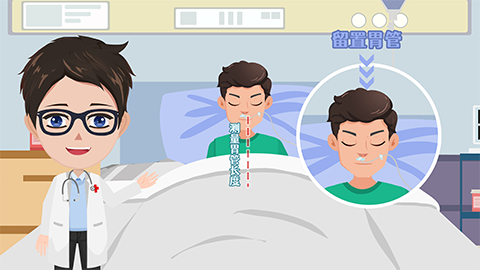Why does the process of nasogastric tube insertion cause discomfort?
Generally, the discomfort caused by nasogastric tube insertion is mainly due to stimulation of the pharyngeal mucosa, airway irritation, gastrointestinal traction, individual sensitivity differences, and procedural stimulation responses. The specific analysis is as follows:

1. Pharyngeal Mucosal Stimulation
The pharyngeal mucosa contains abundant nerve endings and is highly sensitive. During nasogastric tube insertion, the tube directly rubs against and compresses the pharyngeal mucosa, stimulating nerves and causing a foreign body sensation. This can trigger the pharyngeal reflex, leading to nausea and dry heaving.
2. Airway Stimulation
The pharynx is the shared opening for both the airway and esophagus. If the tube deviates from its intended path during insertion, it may briefly touch the tracheal opening or the recurrent laryngeal nerve, stimulating the airway and triggering protective reactions such as coughing or choking. In severe cases, this may even cause breathing difficulties.
3. Gastrointestinal Traction
Once the distal end of the gastric tube enters the stomach, it may pull on the gastric wall or directly contact the gastric mucosa, stimulating gastric nerves. This stimulation can lead to spasmodic contractions of the stomach, resulting in gastrointestinal discomfort such as bloating, abdominal pain, and nausea.
4. Individual Sensitivity Differences
People vary in their tolerance to stimulation. Some individuals have more sensitive nerve endings in the throat and gastrointestinal tract, so even minor stimulation can provoke strong reactions. Others may experience heightened discomfort due to emotional factors such as anxiety or tension, which amplify their perception of physical distress.
5. Procedural Stimulation Response
Nasogastric tube insertion is an invasive procedure. Mechanical stimulation of the digestive tract by the tube during the process can activate the body's stress response. Some individuals may experience increased heart rate, blood pressure fluctuations, dizziness, fatigue, and other systemic discomforts.
In addition, adequate lubrication of the pharynx before tube insertion and gentle handling during the procedure can help reduce discomfort. If severe reactions occur during the procedure, patients should promptly inform medical staff to pause the procedure, allow symptoms to subside, and then reassess whether to continue.




